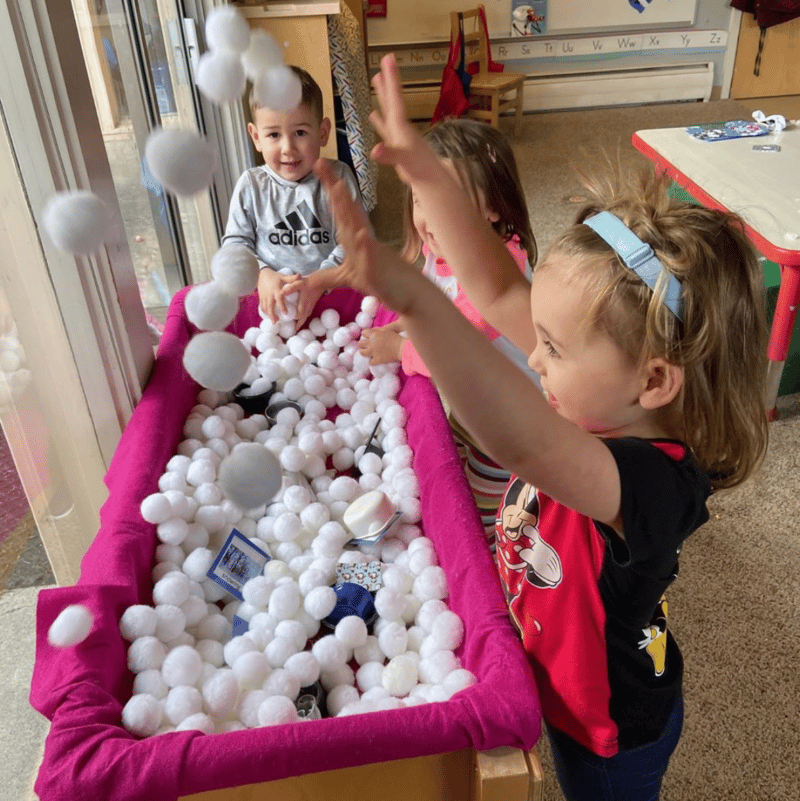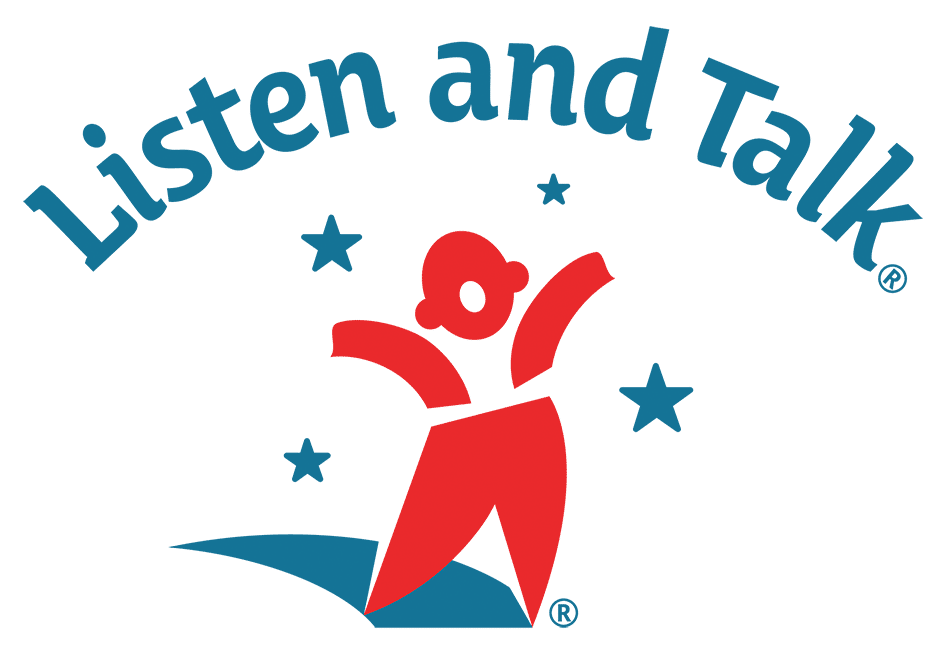
Activity Ideas for Learning and Playing Indoors
As the COVID-19 virus impacts our schools, families now have their children at home during the day while they might also be trying to work. It can be hard to think of daily activities to entertain and educate your child. Are you wondering what you can do to pass the time? Here are 5 ideas to help your child learn during daily routines that are already happening. These indoor playing activities are perfect for children ages one to five.
Circle Time During Morning Time
Circle Time at school gets us set for the day and helps little ones learn concepts. You can use your morning routines to help build your child’s vocabulary. Music can help children actively listen, learn new vocabulary and understand patterns. Here are some examples:
As your child gets dressed for the day, you can use this chant that works on identifying body parts as well as waving hello:
(No tune, just chanting)
“Up, down and all around, Touch the sky and touch the ground
Wiggle your fingers, Wiggle your toes
Wave your hands and say hello”
Then you can say “hello” to each animal or toy by name (E.g. “Hello bunny, Hello car” ect.)
Breakfast or any meal time can include checking the weather. It’s never too early for predictions, so before you look out the window, encourage guessing! “What is the weather like today? Do you think it’s sunny? Rainy? Cloudy?”
The Weather Song (Tune: Oh My Darling Clementine)
“What’s the weather, what’s the weather
What’s the weather like today?
Is it sunny, rainy, cloudy,
What’s the weather like today?”
Singing and talking about the weather helps your child brainstorm and learn new weather vocabulary.
Circle Time at school includes planning so we can make the most of each day. Be sure to talk about your plan for the day (Mama will have a video call after breakfast. I wonder what you will do?) You can name some activities the child can choose from or you can make a list on a piece of paper. Giving choices to your child can help them feel in control. They will likely choose an activity they want to play and be happy with their choice. Drawing a quick picture next to the name of each activity can help the child think about the options and stick to the plan.
Games
If you’ve ever read or watched Mary Poppins, you know that anything can become a game! Turning daily routines into a game can make things like cleaning up fun! Other games can help make the day interesting. Here are a couple of ideas:
Clean Up Game
When too many things are out and about, we can play the Clean Up Game! Each person on the “Clean Up Crew”can be assigned an item or type of item— Lucy, you’re in charge of legos. Jamie, you’ll be getting the books. Aditi, you get alllll the crayons. 1-2-3…Go! Click on this link to hear the Clean Up Song.
Clean Up Song (Click here to hear tune)
Clean up, clean up,
Everybody everywhere
Clean up, clean up
Everybody do your share.
Hide and Seek
You don’t need a lot of people or space to play Hide and Seek. When space is limited, you and your children can hide a small toy. With very young children, you may just place the toy under a blanket . If your kiddos are older, you can hide things in safe places in a room. “Close your eyes…count to 5 (or 10 or 20…depending on how high your child can count). Okay, let’s look!” Following these steps helps children learn to sequence and as you look for the hidden toy, you can practice location words (prepositions). You get to hide the toy, and your child gets to find it. Describe where each item was found and acoustically highlight (emphasize) that preposition. (E.g. “The bear was in the box!” or “I found the bear under the chair!”) You can take turns hiding the item and finding the item once your child has learned the routine.
Make a Fort
As families are working from home, finding cozy spots while grown-ups are checking on other things can help everyone. So, let’s make it fun! Find an extra sheet and drape it over furniture, such as a small table or a few chairs. Have your child crawl inside. They could bring other special toys or stuffed animals with them. Bring a small game or books inside the fort. Creating a new space for your child to play can help entertain and engage them. . It can also be a fun way for grown ups to take a little break. Changes give us things to talk about, so with your fort/tent, share ideas about what it would be like to go camping outside. Think about what color tent you would bring and how big the tent would be? Ask each other what other items you would take if you went camping? Maybe you will take notes and have a camping plan that you’ll use later.
Sorting
Some children love to sort items. Developmentally, children 15 to 18 months can start matching objects by association, function or category. Do you have laundry that needs to be put away? Perhaps your child will want to help sort the items into categories (e.g. pants, shirts, socks). What other things could you sort? Maybe your child could sort their books by size or shape. They could sort their toys by color, texture, shape, or size. For example, your child could put all the red toys in a box, all the orange toys on the chair, and all the yellow toys on the couch. As your child puts things together, you can ask “How are they alike?” “How are they different?” Or “Tell me how these go together?” Sometimes your child is thinking of a different sorting rule than us, so have fun talking about their ideas. There are so many things to talk about as you sort things! .
Exercise
It’s definitely good to move as we stay home and stay healthy! Always think about safety while you find fun ways to get moving. You can try making a path or course to follow inside your home. You can have your child safely jump over different household items. To help everyone stay safe, we suggest soft items like a stuffed animal or a pillow. You can give directions such as having your child walk around a chair and then over to the table. You can hold a sheet and have your child crawl under it. This would be a fun time to play a game working on safety words such as “stop” “wait” and “slow down”. Here’s an example: “When I say “go,” try to run in place as fast as you can. When I say “stop,” you have to stop.” Always be safe and think about the space you have for play. You could have your child tip-toe, hop, skip, jump, bear crawl, or walk. Try switching roles and have your child tell you to “go” and “stop.” If you have masking tape at home, you can put masking tape on the floor or carpet in one long straight line. This allows your child to see the starting and stopping point! Your child could also try to balance as they walk on the masking tape. Adding music to these movement games can be fun too. When the music is playing, your child can start moving, but when the music stops, they have to stop. Not only is this a fun game to play, it also builds on your child’s listening skills.
A few more ideas:
Balls: Find all the balls in your house and put them in a container or a box. Which balls bounce? Which ones are squishy? Can you dump all the balls out and toss them back in the box? It’s still okay for us to go outside, so after checking the weather, you can take this game outside.
Containers and Lids:
Takedown some pots and lids. Have fun matching each lid to the correct pot! Another idea is to wash out used containers and lids that you have at home. Put all the containers and lids in a big box. Have your child sort through the box and try to find the matching top.
Have other ideas? Let us know in the comments section. We would love to hear your thoughts on how you are creating activities at home for your child. Visit listentalk.org/blog/ for more childhood development tips.



